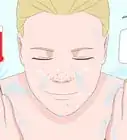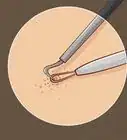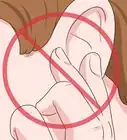This article was co-authored by Laura Marusinec, MD. Dr. Marusinec is a board certified Pediatrician at the Children's Hospital of Wisconsin, where she is on the Clinical Practice Council. She received her M.D. from the Medical College of Wisconsin School of Medicine in 1995 and completed her residency at the Medical College of Wisconsin in Pediatrics in 1998. She is a member of the American Medical Writers Association and the Society for Pediatric Urgent Care.
This article has been viewed 181,389 times.
Blackheads, also known as comedones, are a mild form of acne caused by excess oil that clogs your pores. They are unsightly, but luckily, there are lots of ways to remove them and to prevent them from coming back. Following a good skin care regimen is the best way to keep your skin clear of blackheads, but you can also extract the blackheads you already have, as long as you are very careful not to cause further damage to your skin.
Steps
Manually Extracting a Blackhead
-
1Consider seeing a professional. Extracting blackheads at home can cause irritation, infection, scarring, and discoloration of the skin if you don't do it correctly. For this reason, it may be a good idea for you to see a dermatologist or an esthetician to have stubborn blackheads professionally extracted.
- In addition to extractions, skin care professionals can also provide services such as microdermabrasion and chemical peels, which can reduce the appearance of blackheads.
- Some people have skin that is naturally more prone to inflammation and scarring. If this is the case for you, it is even more important that you do not attempt to manually extract blackheads by yourself.
-
2Prepare your skin for extraction. If you choose to attempt extraction at home, no matter which method you choose, you will need to prepare your skin properly for the best results. You will want to make sure that your skin is clean and your pores are opened.[1]
- Always wash your face thoroughly before attempting any kind of blackhead extraction. Make sure any makeup is completely removed from your skin.
- Use steam to open your pores. You can do this by applying a warm, wet washcloth to your face for several minutes, by placing your face over a vessel of hot water and covering your head with a towel to prevent the steam from escaping, or by taking a hot shower. If you plan on doing this often, you may want to purchase a facial steamer. Whichever method you choose, be very careful not to burn yourself!
Advertisement -
3Use your fingers. Once you have properly prepared your skin, you can attempt to extract a blackhead from your forehead by applying pressure with your fingers. The key to this technique is to be gentle. If you use excessive force when attempting to extract a blackhead, you may cause your skin to become inflamed, and you may even end up with a permanent scar, though this is rare.
- When using this method, apply pressure from opposite sides of the blackhead using your two index fingers. If your first attempt is unsuccessful, try moving your fingers to another position.
- Make sure your fingers are not touching the blackhead. You want to apply pressure around the blackhead, not on top of it.
- Wrap your fingers with a tissue to protect your skin. It is very important to not use your fingernails to extract a blackhead, as this can damage your skin and introduce bacteria into the pore.
- If the blackhead does not come out after two attempts using gentle pressure, it's time to give up. If you really want to extract that stubborn blackhead, it's best to see a skin care professional. You should also stop your attempt if your skin becomes red at all.
-
4Use a comedone extractor tool. This is a small metal tool with a loop at the end that can be used to extract blackheads from your skin. Comedone extractors can be purchased at most beauty stores or pharmacies. These tools must be used with extreme caution in order to prevent scarring. If your tool comes with directions, follow them precisely, or ask your dermatologist to show you how to use it properly.[2]
- Before using the comedone extractor tool, make sure it is sterilized. A good way to do this is to place it in boiling water for five minutes. Make sure to let it cool down before using it.
- Position the loophole of the comedone extractor carefully around your blackhead.
- Apply gentle pressure to one side of the comedone extractor at a time. If the blackhead does not come loose, do not use excessive force. Instead, try again in a few days or see a skin care professional for a professional extraction.
- Some comedone extractors have a lancet on one end, which is used by professionals to puncture the skin in order to remove whiteheads. This part of the tool is not necessary for the removal of blackheads because they are not covered by a layer of skin. Furthermore, it is extremely easy to damage your skin with this tool, so it is best to leave it to the professionals.
-
5Use blackhead removal strips. These strips are widely available at beauty stores and pharmacies, and are made by a variety of manufacturers. They work by pulling the oil and bacteria from the pores in your forehead when you peel the adhesive strips away from your skin. They are much less likely to cause damage to your skin than other extraction methods, but they are also less likely to remove the entire blackhead, so they may not be a good long-term solution to your blackheads.[3]
- Be sure to dampen your face before applying the strip. This allows it to fully adhere.
- Make sure to read the directions on the package and leave the strip on your skin for the specified amount of time in order to achieve the best possible results.
-
6Treat your skin after extraction. After you have finished extracting blackheads from your forehead, it is important to clean your skin using an antibacterial cream or toner. This will help prevent infection and, hopefully, the recurrence of the blackheads.[4]
- If these products are too harsh for your skin, you can also try apply tea tree oil after an extraction.
- While skin care products that contain acids are generally recommended to help prevent blackheads, it is best to avoid these products for 24 hours after you manually extract a blackhead.[5]
Treating Blackheads With a Skin Care Regimen
-
1Wash your face twice a day. Washing your face regularly will help get rid of excess oil, dirt, and makeup, all of which can clog your pores. Face washes that contain salicylic acid are ideal for skin that is prone to blackheads, as they help to exfoliate your skin, kill bacteria, and reduce inflammation.
- Take some extra time to massage the face wash into areas where you have the most blackheads.
- Hair care products may clog your pores, so try washing your face after you wash your hair.
- Don't use products that contain salicylic acid if you are allergic to aspirin.
-
2Exfoliate. Facial exfoliating scrubs help fight blackheads by unclogging your pores and removing dead skin cells. Most of these products are designed to be used approximately once a week.
- Do not use exfoliating facial scrub more often than recommended because it may irritate your face and cause redness.
-
3Use a mask. There are a variety of masks you can buy to help keep your pores clear and reduce inflammation. Clay masks and facial peeling masks are especially helpful for individuals suffering from oily skin and blackheads.[6]
- Apply the mask once a week, or as often as recommended by the manufacturer. Applying a mask too often may dry out your skin.
-
4Apply acne creams. Look for products that contain benzoyl peroxide, salicylic acid, retinoids, or azelaic acid as active ingredients. There are many over-the-counter options available, but if these do not work for you, your doctor may be able to prescribe a stronger medication.
- These products may cause skin irritation, especially if you use more than one of them. If you experience irritation, try using the product less often or using a different product each day instead of using all of them every day.
-
5Try natural acne treatments. If you want to avoid using harsh chemicals on your face, you may be able to fight your blackheads with ingredients you already have in your kitchen. [7]
- Try massaging lemon juice, slightly diluted with water, into your face for an effect similar to that of a salicylic acid wash.
- Mix baking soda and water together to create a paste. Then scrub your face with the solution to gently exfoliate.
-
6Keep oil off your face. Do your best to keep your hair off of your face, especially if you tend to get blackheads and pimples in areas that typically come in contact with your hair. Avoid touching your face. Your pillowcase is another source of unwanted oil, so change it often.
- Not all skin care products are created equal. Products that contain oil can clog your pores, leading to worse problems with blackheads and other types of acne, so be sure to look for oil-free moisturizers and makeups.
Expert Q&A
-
QuestionWhat is the best way to remove blackheads that are deep on your back?
 Jennifer Boidy, RNJennifer Boidy is a Registered Nurse in Maryland. She received her Associate of Science in Nursing from Carroll Community College in 2012.
Jennifer Boidy, RNJennifer Boidy is a Registered Nurse in Maryland. She received her Associate of Science in Nursing from Carroll Community College in 2012.
Registered Nurse Blackheads that are deep on your back are best removed by a dermatologist or a qualified skin professional.
Blackheads that are deep on your back are best removed by a dermatologist or a qualified skin professional. -
QuestionHow much does an extractor cost?
 Jennifer Boidy, RNJennifer Boidy is a Registered Nurse in Maryland. She received her Associate of Science in Nursing from Carroll Community College in 2012.
Jennifer Boidy, RNJennifer Boidy is a Registered Nurse in Maryland. She received her Associate of Science in Nursing from Carroll Community College in 2012.
Registered Nurse Blackhead extractors range in price from about $6.00 for an individual extractor tool to around $15.00 for an extractor kit. They can be found in drugstores, beauty supply stores and online.
Blackhead extractors range in price from about $6.00 for an individual extractor tool to around $15.00 for an extractor kit. They can be found in drugstores, beauty supply stores and online. -
QuestionHow do you get rid of deep blackheads?
 Laura Marusinec, MDDr. Marusinec is a board certified Pediatrician at the Children's Hospital of Wisconsin, where she is on the Clinical Practice Council. She received her M.D. from the Medical College of Wisconsin School of Medicine in 1995 and completed her residency at the Medical College of Wisconsin in Pediatrics in 1998. She is a member of the American Medical Writers Association and the Society for Pediatric Urgent Care.
Laura Marusinec, MDDr. Marusinec is a board certified Pediatrician at the Children's Hospital of Wisconsin, where she is on the Clinical Practice Council. She received her M.D. from the Medical College of Wisconsin School of Medicine in 1995 and completed her residency at the Medical College of Wisconsin in Pediatrics in 1998. She is a member of the American Medical Writers Association and the Society for Pediatric Urgent Care.
Board Certified Pediatrician Follow the same steps noted in the article, but realize that deep blackheads are best treated by a professional. They may use extraction methods, chemical peels, microdermabrasion, or other techniques. They may also prescribe prescription strength acne products. If you have a lot of deep blackheads, a professional may recommend laser or light treatments, or oral medications.
Follow the same steps noted in the article, but realize that deep blackheads are best treated by a professional. They may use extraction methods, chemical peels, microdermabrasion, or other techniques. They may also prescribe prescription strength acne products. If you have a lot of deep blackheads, a professional may recommend laser or light treatments, or oral medications.
References
- ↑ http://www.aidforacne.com/get-rid-of-blackheads/
- ↑ http://www.thedermreview.com/blackhead-extractor/M/
- ↑ http://naturalbeautytips.co/how-to-get-rid-of-blackheads/
- ↑ http://www.aidforacne.com/get-rid-of-blackheads/
- ↑ http://www.refinery29.com/2013/11/56346/how-to-prevent-blackheads#page-3
- ↑ http://naturalbeautytips.co/how-to-get-rid-of-blackheads/
- ↑ http://naturalbeautytips.co/how-to-get-rid-of-blackheads/
- ↑ http://stylecaster.com/beauty-high/charcoal-skin-care/
About This Article
To remove a blackhead from your forehead, start by washing your face thoroughly to avoid infections. Then, take a hot shower to open your pores, which will make removing the blackhead easier. Next, apply pressure to the skin on either side of the blackhead with your index fingers to squeeze the blackhead out. Alternatively, apply an adhesive blackhead removal strip, which you can buy from the pharmacy. You should also wash your face twice a day to prevent blackheads from forming. Additionally, use an exfoliating scrub once a week to get rid of dead skin cells. For tips from our Medical co-author on how to treat blackheads with a skin care regimen, read on!
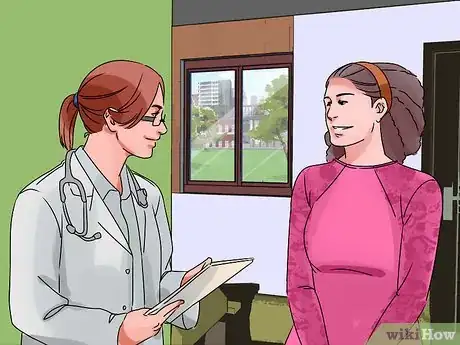

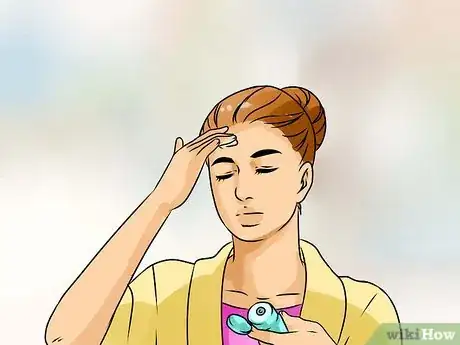
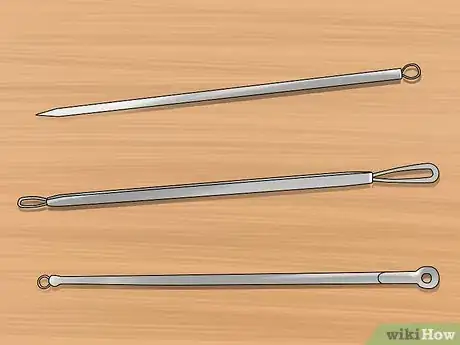
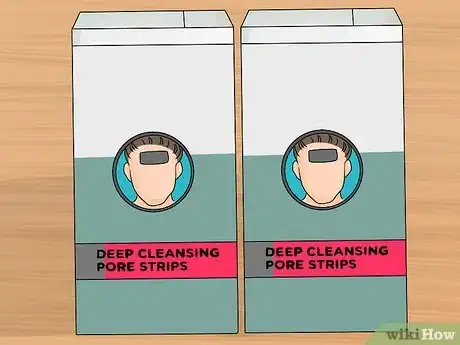
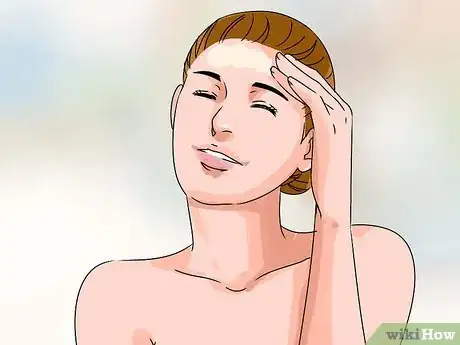
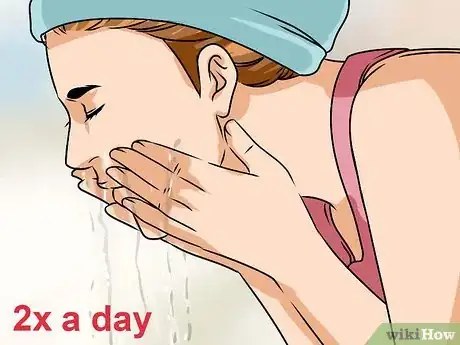


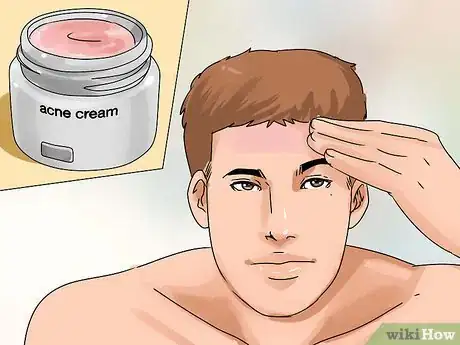
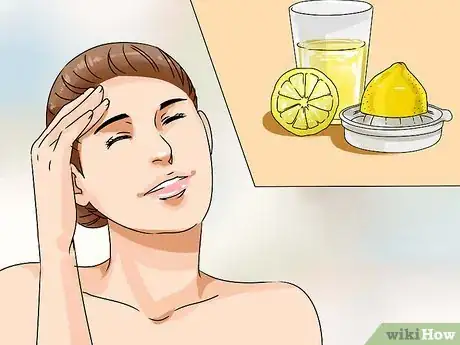
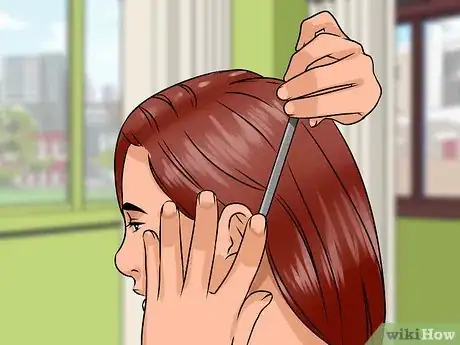
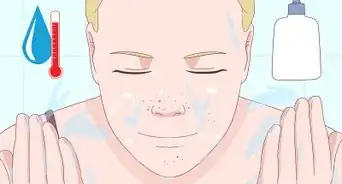
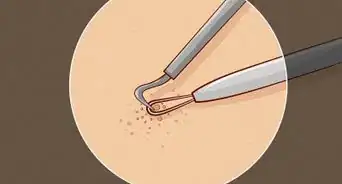
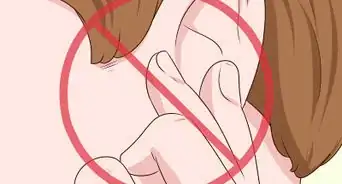

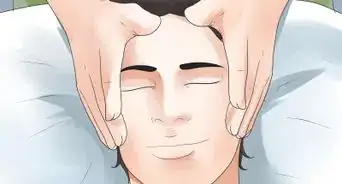
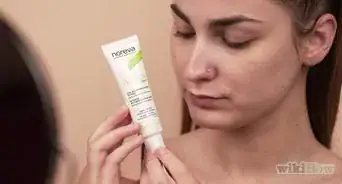
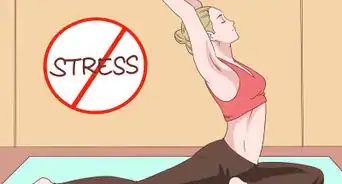
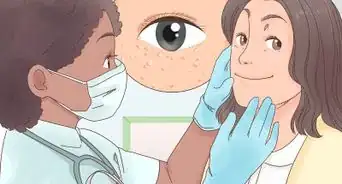
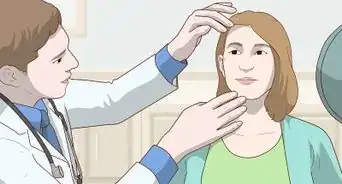
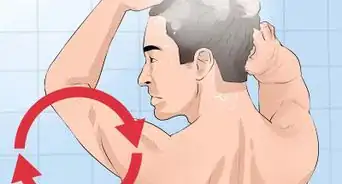
-Step-9.webp)








